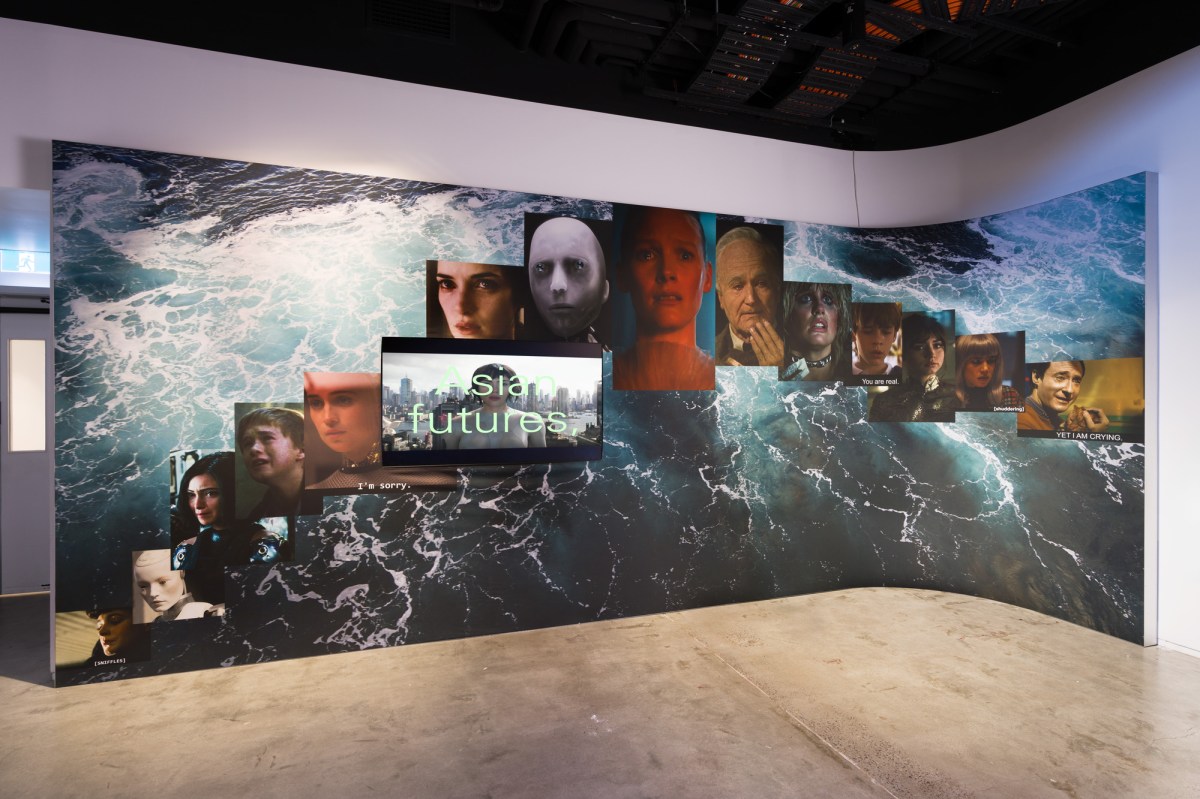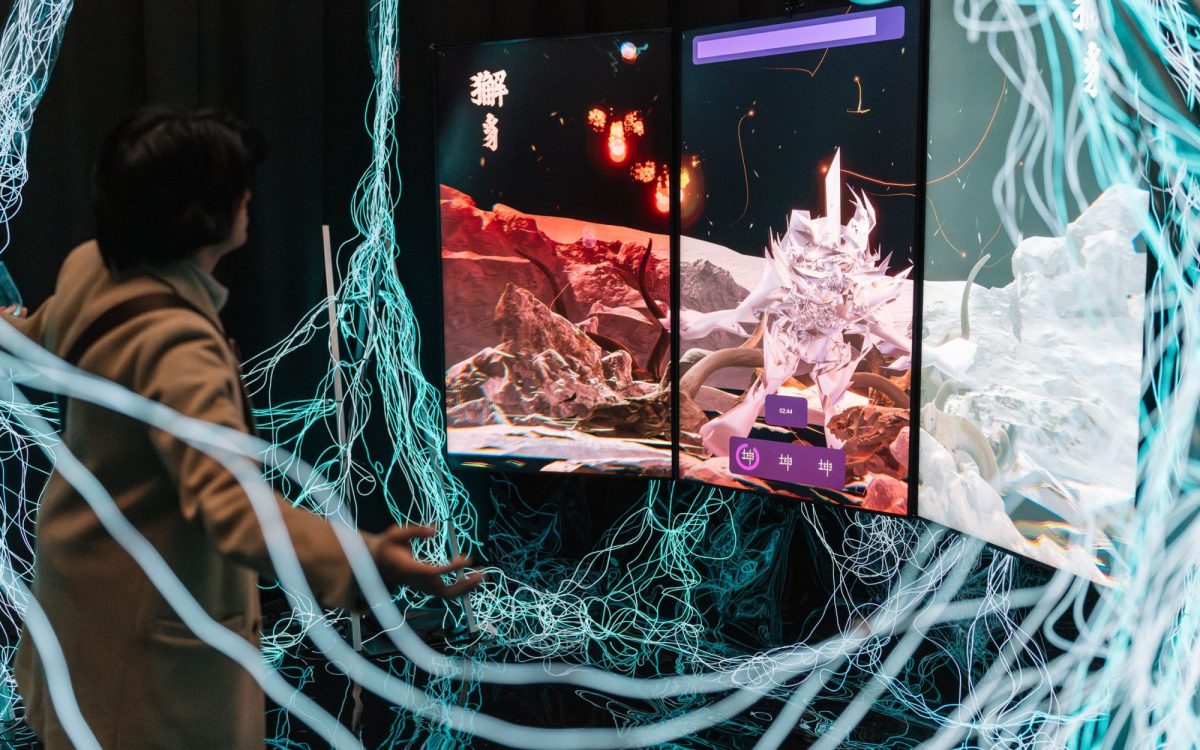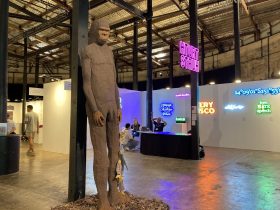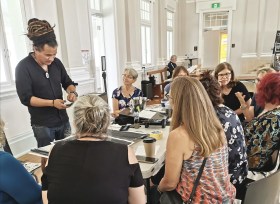SCI-FI: Mythologies Transformed is a collaborative exhibition developed in partnership with Singapore’s ArtScience Museum and Science Gallery Melbourne that seeks to address gender and racial stereotypes in Western science fiction.
Cinematic tropes are taken apart and reclaimed, most notably in Virtually Asian and White Robot Tears (Cry Me An Ocean) by California-based Astria Suparak. In Virtually Asian, the voice of a robotic female narrator sarcastically points to the lack of Asian casting in sci-fi worlds full of billboard geishas, accompanied by scenes from popular Hollywood films like Blade Runner (1982) and Ghost in the Shell (2017). It’s OK, because ‘you can fix it later in CGI’.
The video is displayed against a wall with collaged photographs of robot and cyborg movie characters that display abnormal humanity and emotions, predominantly played by white actors.

Suparak’s works are placed in the Science Gallery’s lower level – a space that’s slowly being utilised for exhibitions – among several other photographic and projection pieces. To an extent, this curatorial decision works.
Stills from Cao Fei’s film Nova of a futuristic Beijing fit perfectly with the hushed underground atmosphere, recreating the essence of a bunker or spaceship for the desolate astronauts portrayed.
Upstairs in the main gallery area, things feel more fragmented in terms of exhibition experience and display. The Science Gallery’s modular layout may have not worked in its favour this time around.
A giant wall acts as a divide where visitors have to enter by circling around it, and major installation pieces like Moon Kyungwon and Jeon Joonho’s The Ways of Folding Space and Flying and Guài 怪 by Mindy Meng Wang and Monica Lim are housed in closed-off rooms.
Smaller pieces are scattered around and struggle to have a presence, despite being conceptually intriguing. Corin Ileto and Tristan Jalleh’s Lux Aeterna is a surreal music video connecting sound with celestial beings, but the two-seater sofa makes its positioning feel awkward. Ileto and Jalleh will perform Lux Aeterna (Eternal Light) live as part of Now or Never on Thursday 22 August.
In SCI-FI, screens of varying sizes cannibalise for attention, especially in the section ‘The Monstrous Feminine’, with most of the works having a video element. Luckily, Paola Balla’s meditative installation Mok Mok Murrup Yakuwa (2023) offers a moment of respite. Previously commissioned and exhibited by RISING for Shadow Spirit, the work is a refreshing encounter at the Science Gallery that feels quite different to its initial Flinders Street Ballroom display.
SCI-FI draws on works and exhibition thematics from New Eden: Science Fiction Mythologies Transformed, originally developed for ArtScience Museum Singapore and exhibited from 2023-24. While there are really strong pieces that address pressing topics in meaningful ways, the exhibition design seems to be going through some sort of teething peroid, especially when compared to spectacular past shows at Science Gallery like DARK MATTERS and MENTAL: Head Inside, also an ArtScience Museum co-curated project.
Read: Exhibition review: Candice Lin: The Sex Life of Stone, MUMA
For those wanting to delve into the screen and literary culture side of sci-fi, the exhibition includes a Science Fiction timeline beginning from the 19th century. Books by First Nations authors have been added for the Australian iteration. There is also a mini cinema screening works by Cao Fei, Club Ate, Debbie Ding, Fei Yi Ning, Jen Rae and Claire G Coleman, among others, for the duration of the exhibition.
SCI-FI: Mythologies Transformed is now on view at Science Gallery Melbourne; free.





